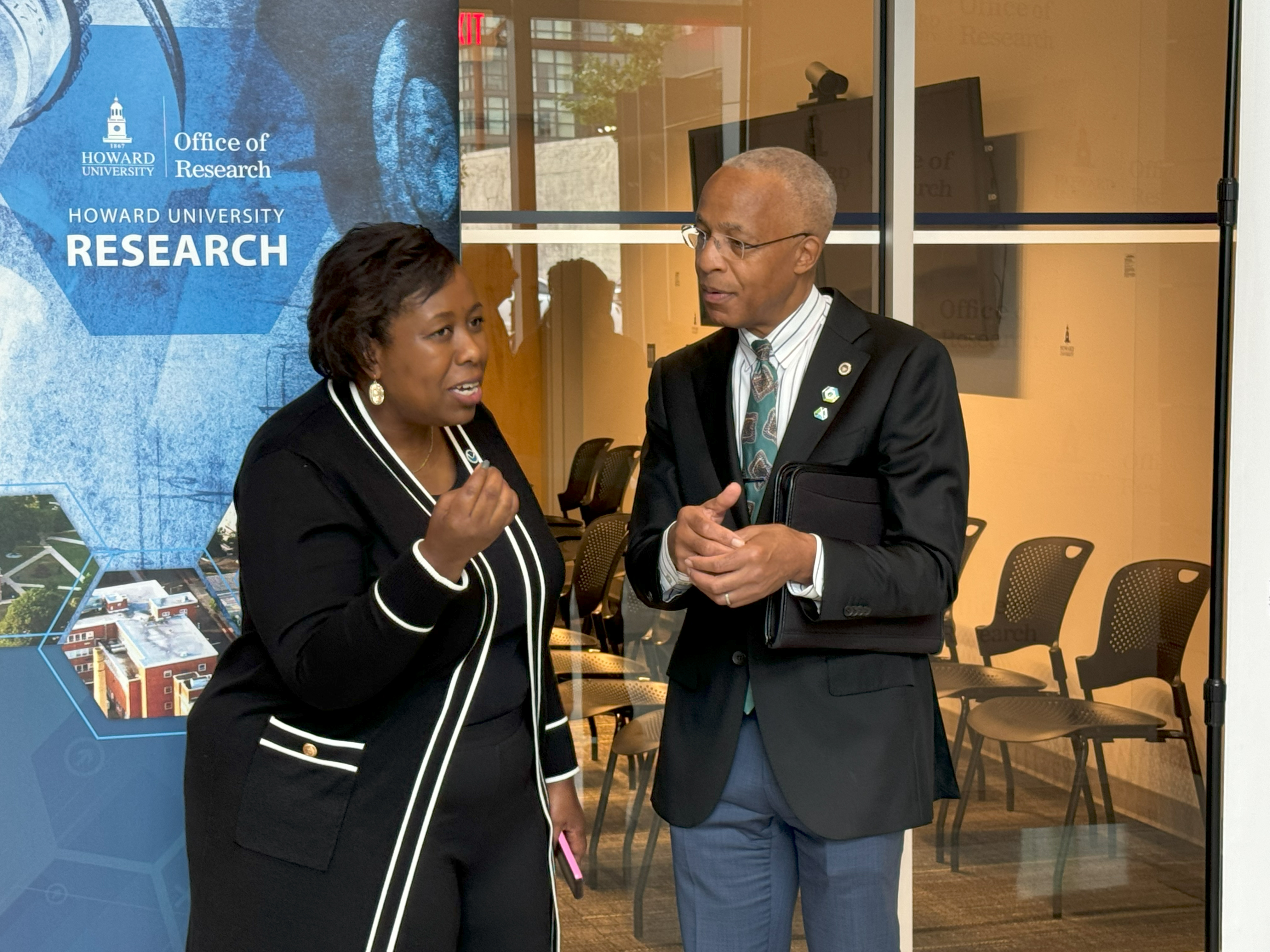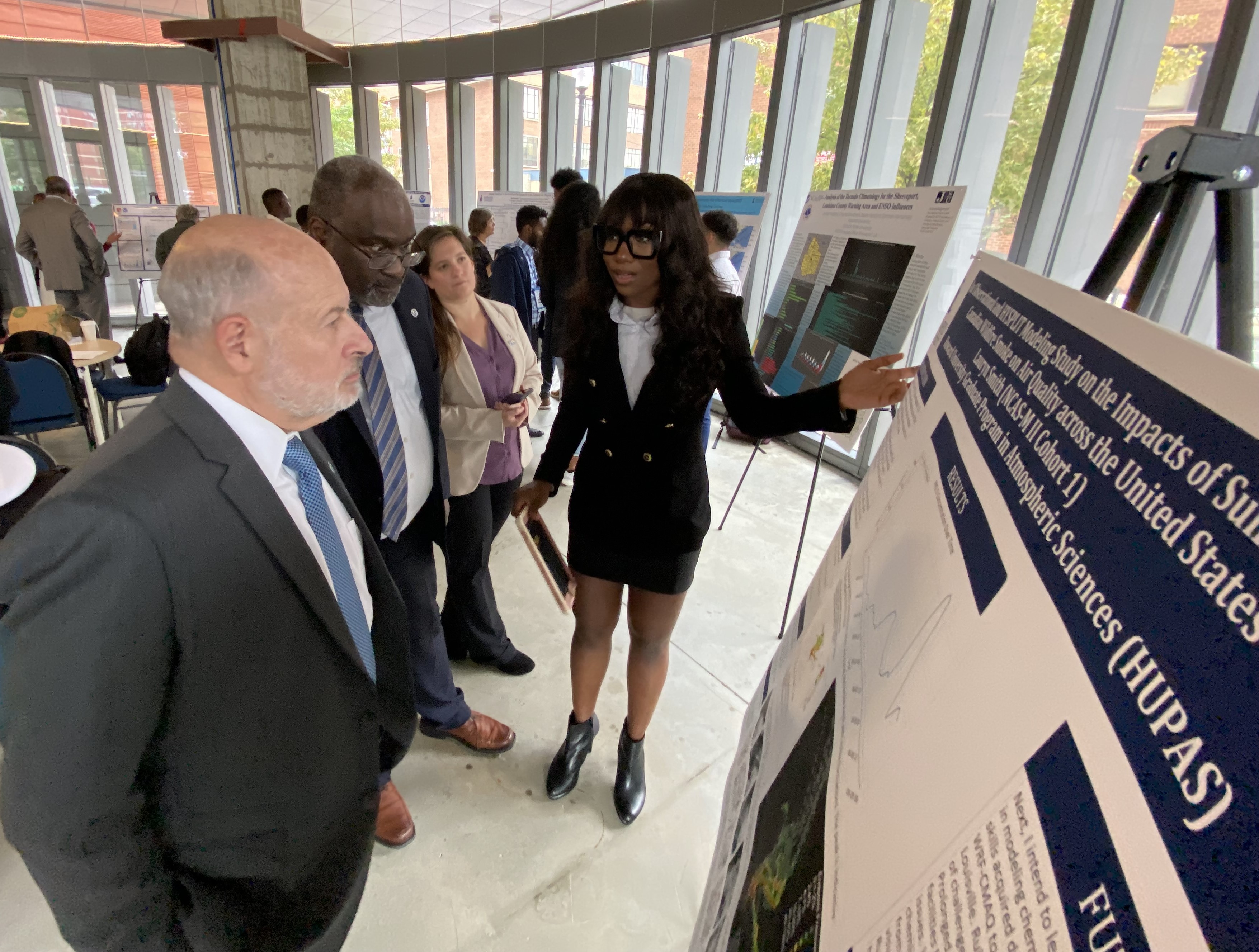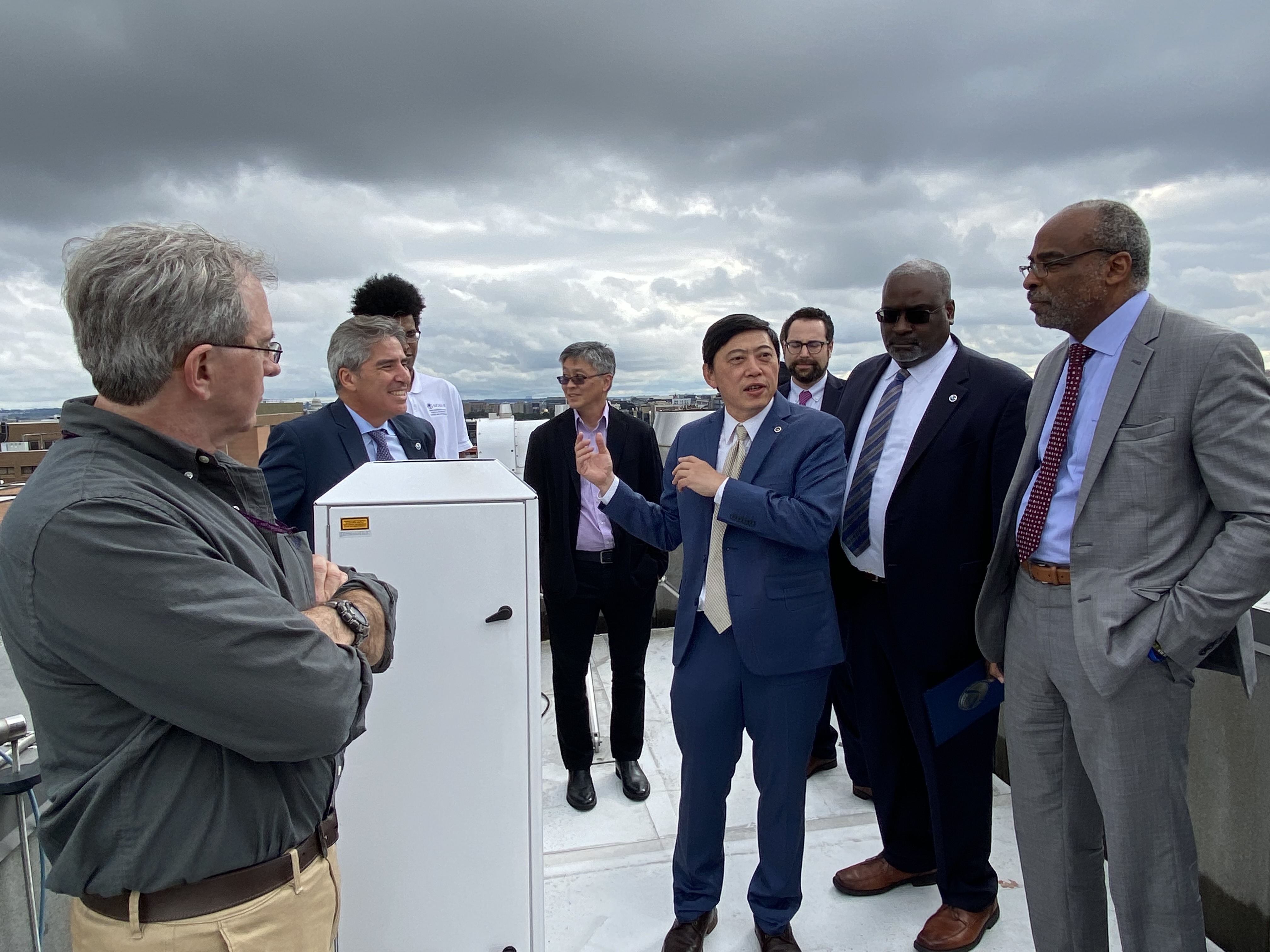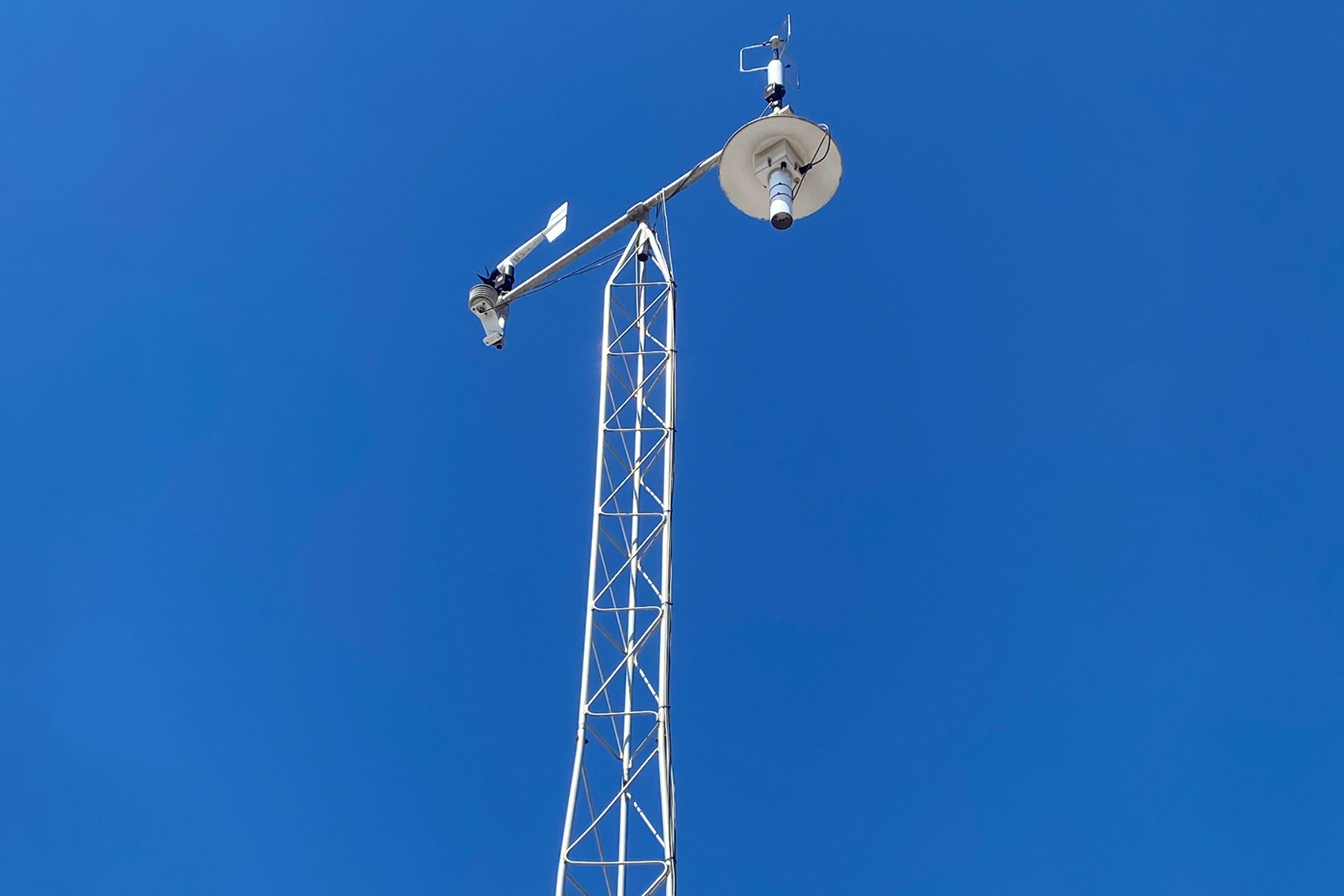October 15, 2024
On October 2, NOAA’s Air Resources Laboratory (ARL) celebrated their long partnership with Howard University at a public event on the Howard campus. Under Secretary of Commerce for Oceans and Atmosphere and NOAA Administrator Dr. Richard Spinrad, Assistant Secretary of Commerce for Environmental Observation and Prediction Dr. Michael Morgan, Provost Dr. Anthony Wutoh attended the event with other NOAA and University leadership and attendees. Beginning with a student poster session featuring eight students in the NOAA Center for Atmospheric Science and Meteorology (NCAS-M), the event ended with a rooftop visit to view the new tower ARL modernized earlier this year.
In 2001 ARL and Howard agreed that ARL would install a tower on a Howard University building rooftop as part of ARL’s DCNet program. After the installation of the tower, the partnership continued and DCNet became UrbanNet in 2023. In March 2024, ARL began revitalizing the Howard University tower through UrbanNet to better assess the changed urban landscape in the DC metro area. New instruments to measure temperature, air pressure, wind speed and direction, heat stress and relative humidity were installed to allow for a more accurate understanding of the climate in Washington D.C.
The partnership in atmospheric science research between NOAA and Howard University dates back more than 20 years, with NCAS-M. ARL has taken advantage of NCAS-M, as well as its physical proximity to Howard University, to partner on a number of atmospheric science research efforts dating back to at least the late 1990s. As a result of the tragic events of September 11, 2001, Howard was one of the first partner sites to establish an ARL observing station on the roof of one of its buildings. As part of ARL’s DCNet program, these stations helped scientists better understand the movement of winds and dispersion patterns of possible harmful vectors such as radiation. This information would allow first responders to best track affected areas for any possible terrorist attacks.
The new and upgraded sensors will increase our understanding of the way that cities contribute greenhouse gas emissions. Around the world, more people are living in cities, and city emissions are increasing faster than emissions in rural areas. But the way that urban emissions were measured in the past didn’t always account for the differences between various city landscapes. Data gathered by the UrbanNet Project will improve projections about regional and global greenhouse gas emissions, and provide insights into the ways that those urban emissions could impact a changing climate.
Since 2004, Howard University has been a key participant in the Global Climate Observing System Reference Upper Air Network (GRUAN) by operating an observing station at its Beltsville, MD research station. This was an effort initiated at ARL and is now part of an active global network of 32 GRUAN stations around the world. For many years scientists at Howard have worked in partnership with ARL scientists and Howard students have taken on 12-week NOAA Experiential Research and Training Opportunities (NERTO) internships at ARL.
Earlier this year ARL also implemented a Scientist-in-Residence program, with the first recipient being Dr. Osinachi Ajoku from Howard University. Dr. Ajoku worked with ARL scientists this summer investigating the impacts of regional emissions and long-range transport of ozone and aerosols on the evolution of the lowest part of the atmosphere, known as the boundary layer.
NOAA and Howard University, through NCAS-M, educates diverse, highly-trained professionals in atmospheric and environmental sciences. With students actively engaged in researching climate, weather and air quality prediction and analyses, they are better prepared to enter the NOAA and broader community workforce.





